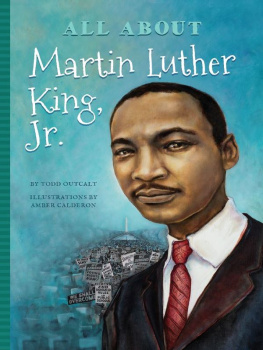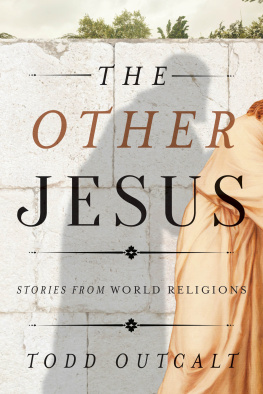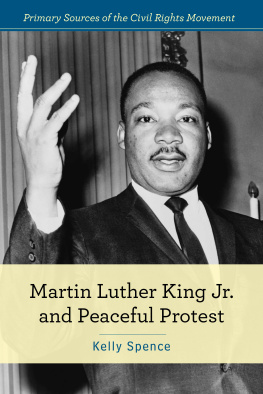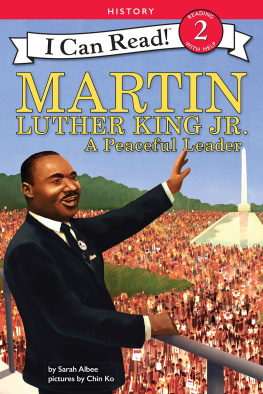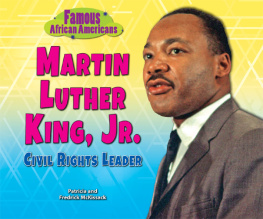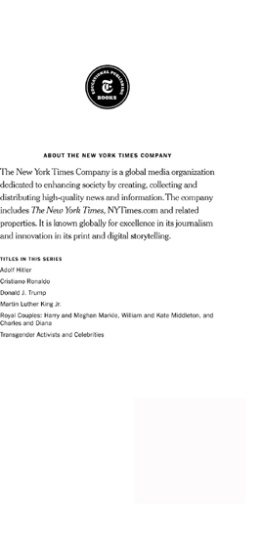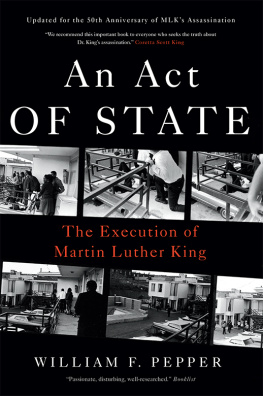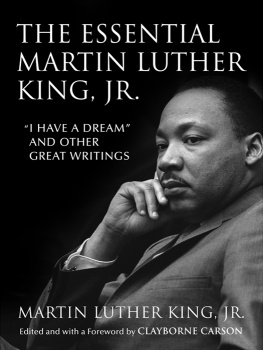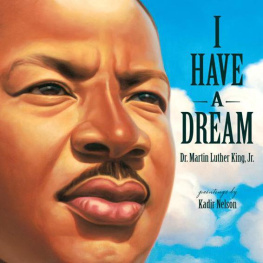All About
Martin Luther King, Jr.
Todd Outcalt

All About Martin Luther King, Jr.
Copyright 2016 by Todd Outcalt
Published by Blue River Press
Indianapolis, Indiana
www.brpressbooks.com
Distributed by Cardinal Publishers Group
Tom Doherty Company, Inc.
www.cardinalpub.com
All rights reserved under International and Pan-American Copyright Conventions.
No part of this book may be reproduced, stored in a database or other retrieval system, or transmitted in any form, by any means, including mechanical, photocopy, recording or otherwise, without the prior written permission of the publisher.
ISBN: 978-1-68157-091-4
eISBN: 978-1-68157-103-4
Author: Todd Outcalt
Series Editor: Charleen Davis
Editor: Dani McCormick
Interior Illustrator: Amber Calderon
Book Design: Dave Reed
Cover Artist: Jennifer Mujezinovic
Cover Design: David Miles
Printed in the United States of America
Contents
To the Ten Point Coalition
All About
Martin Luther King, Jr.
Preface
Dr. Martin Luther King, Jr. was one of the most influential Americans of the 20th century. He is remembered for his leadership in the civil rights struggles during the 1950s and 1960s in the American South. Dr. King is also remembered for his powerful speeches and sermons, his philosophy of nonviolent resistance, and his commitment to ending segregation, unjust laws, and poverty.
Martin Luther King, Jr. was not always famous. In fact, he grew up like other African American children in the South and experienced many forms of racism and segregation. Segregation was a part of Martins childhood and this systemwhich treated black people and white people differentlyimpacted him in many ways.
Long before Martin began speaking about civil rights and leading marches, he had experienced racism in his own life. His father, also named Martin, was a Baptist pastor, and he taught young Martin that segregation was wrong. These many conversations and experiences with his father would shape young Martins life in powerful ways and would, in fact, prepare him to be a great American leader.
Although Martins life ended violently, he will always be remembered for his peaceful marches and for his speeches about social change. He will be remembered for making a difference for millions of Americans. Every year, on the third Monday of January, Americans celebrate Martin Luther King, Jr. Day as a national holiday. This holiday is near Martins birthday (January 15) and is a day when all Americans can look back and remember Dr. Kings legacy. It also allows Americans to remember that the dream of equality and the promise of justice for all is still a work-in-progress.
When we remember Martin Luther King, Jr. we are not only remembering a great American, but a great person. Dr. King said that he wanted to be remembered as a person who gave his life in the service of others. He wanted to be remembered as a person who fed the hungry and loved other peopleregardless of race.
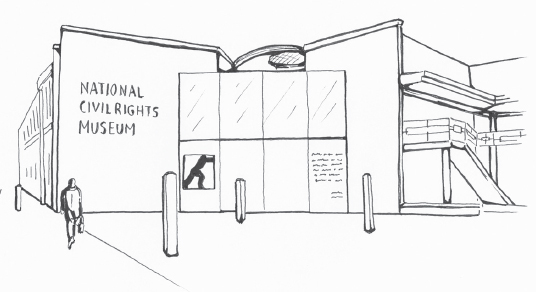
The National Civil Rights Museum was built around the Lorraine Motel where Martin was assassinated
Today, many streets across America are named after Martin Luther King, Jr. Buildings and memorials across the nation preserve his memory too, including the National Civil Rights Museum in Memphis, Tennessee. But Martins influence was much greater than brick and stone. He is remembered for his actions and his words.
Dr. Martin Luther King, Jr. was a great American, but his story had humble beginnings.
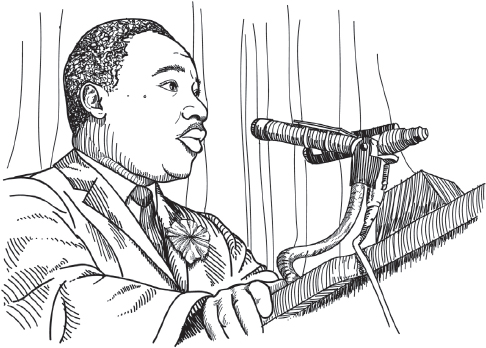
Martin Luther King, Jr. speaking at a rally in 1966
Chapter 1
Growing Up
Martin was born on January 15, 1929 in Atlanta, Georgia. He was a beautiful baby and when he was born his parents were very happy. Martin was their second child and they felt very blessed to have him in their family.

Martins birth-home in Atlanta, Georgia
What many people do not know, however, is that when Martin was born, his parents named him Michael after his father. However, when Martin was five years old, his father decided to have both of their names changed. Both Michael Sr. and Michael Jr. became Martin Luthera name that had spiritual significance.
The inspiration for the name change came from Martin Luther, a church reformer who had lived in Germany in the 1500s. That Martin Luther had set out to reform the church in his day and was an inspirational leader to Martin King, Sr., who was a Baptist pastor. Martin Sr. had read many of Luthers writings and felt inspired by his teachings about faith and life. He felt inspired by Luthers leadership during a time of crisis.
Now Martin had a new nameand as we shall seea new identity, too.
Young Martin grew up in a loving home with his father, Martin Sr. and his mother, Alberta Williams King. He had an older sister, Willie Christine, and a younger brother, Alfred Daniel. The three children got along well and loved each other. They were a happy family. Since his father was a Baptist pastor, many of Martins early experiences centered around church and home.

Alberta Williams King, Martin Luther King, Sr., Jennie Celeste Williams (Albertas mother), Alfred Daniel King, Willie Christine King, and Martin Luther King, Jr. pose for a family photo
In the black community in Atlanta, Martin Sr. was well-known. He often took young Martin Jr. to the church office when he went to work or with him to visit peoples homes. Martin grew to love the church. He sang in the church choir at his fathers parishthe Ebenezer Baptist Church in Atlantaand attended youth meetings there.

Martin would preach in front of the choir at his fathers church, Ebenezer Baptist Church in Atlanta, Georgia
Martins mother, Alberta, was a soft-spoken woman who was very dynamic and respected within the community. She had a college educationwhich was an achievement few African American women of the time could imagine. Nevertheless, Martins mother was a humble and gracious woman who helped her husband, Martin Sr., in his pastoral work. She also tried to shelter Martin as much as possible from the realities of segregation.
As Martin Luther King, Jr. grew, he began to have other experiences that would shape his life and his thoughts about race and segregation. For example, when Martin was very young, his best friend was white and lived across the street. When the boys became old enough to go to school, the white boys parents would no longer allow him to play with Martin.
Martins friend went to a white school. Martin had to go to a school for black students. Schools were just one way that segregation was experienced. There were many other forms of segregation too.
Businesses and stores were also segregated. Different drinking fountains for black people and white people existed. These were often marked as Black and White. Restrooms were also marked in this way. Many times blacks werent allowed to use public restrooms at all. Often, instead of Black the sign read, Colored.
Next page
